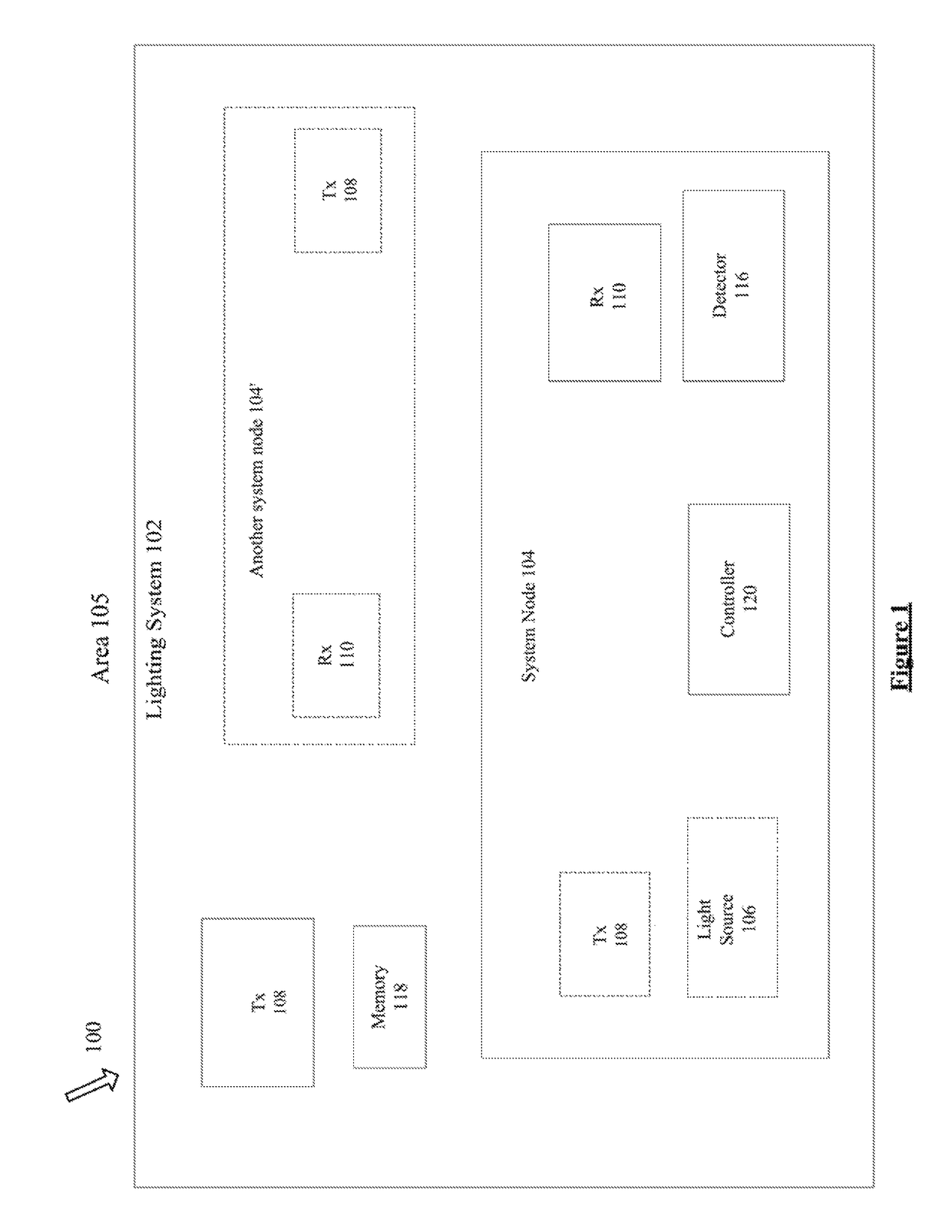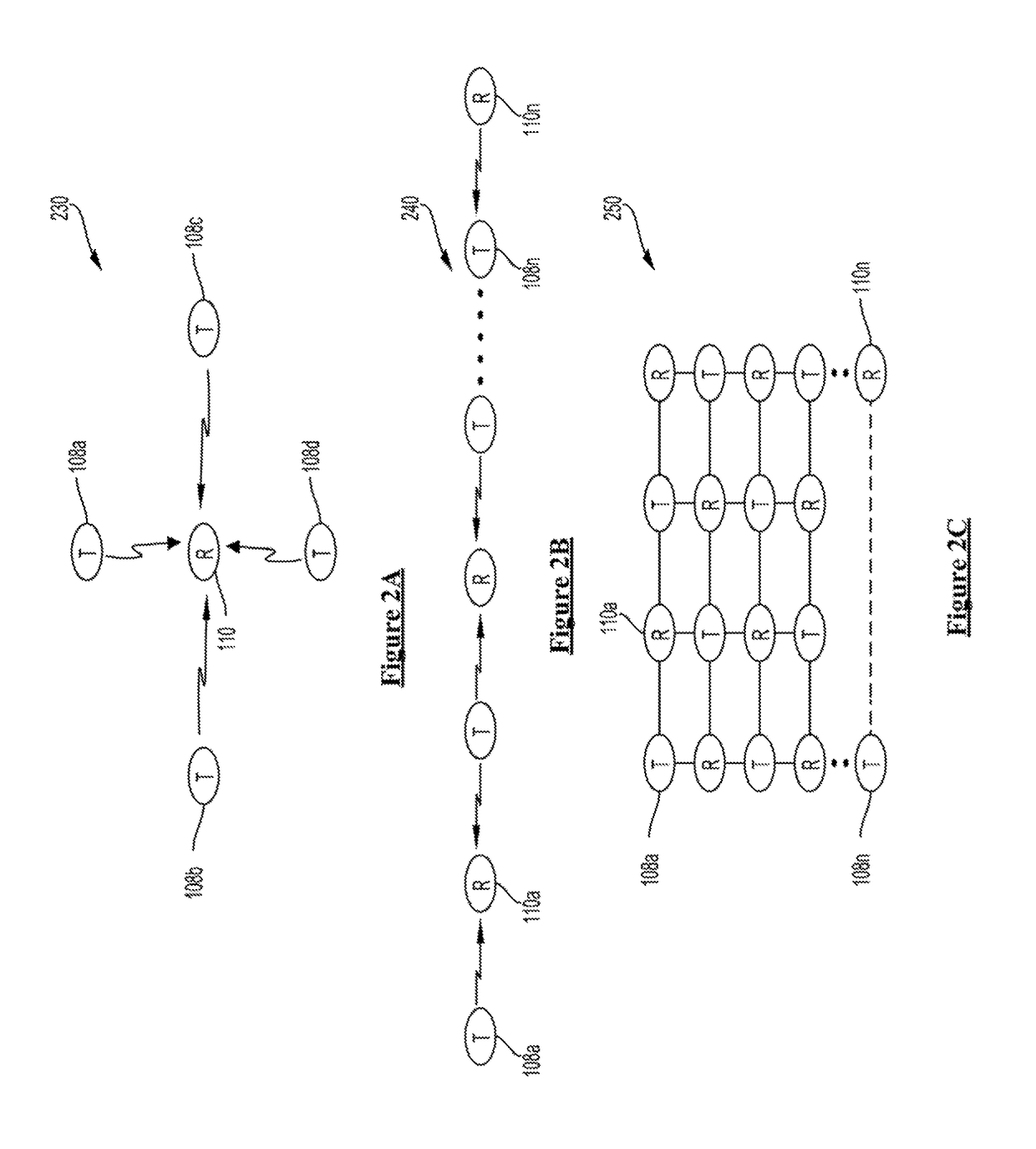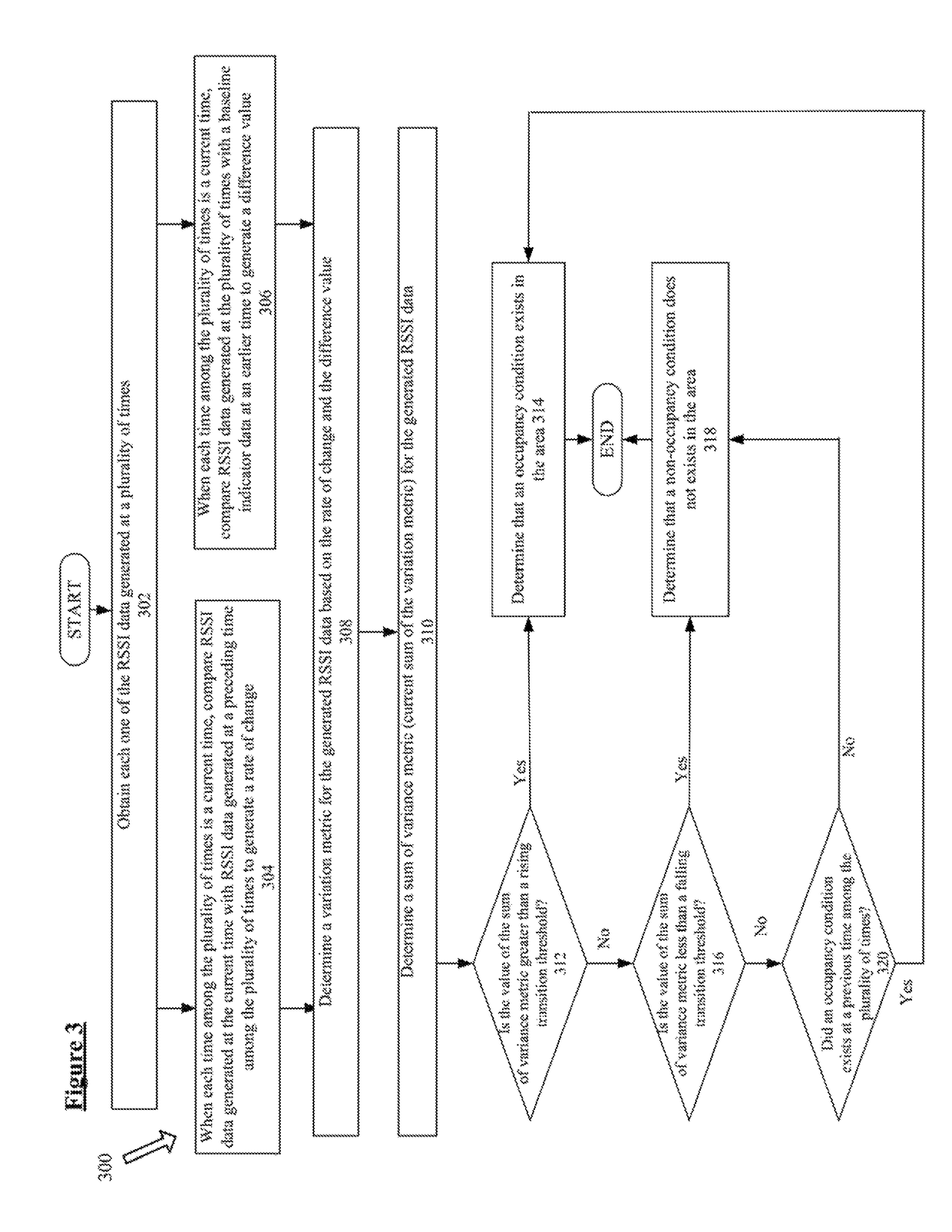Occupancy and non-occupancy detection in the lighting system
a technology for lighting systems and occupancy and non-occupancy detection, applied in transmission, transmission, electroluminescent light sources, etc., can solve the problems of affecting the effectiveness of indoors, requiring a large amount of memory for storing data, and requiring a considerable amount of dedicated sensors
- Summary
- Abstract
- Description
- Claims
- Application Information
AI Technical Summary
Benefits of technology
Problems solved by technology
Method used
Image
Examples
Embodiment Construction
[0022]In the following detailed description, numerous specific details are set forth by way of examples in order to provide a thorough understanding of the relevant teachings. However, it should be apparent that the present teachings may be practiced without such details. In other instances, well known methods, procedures, components, and / or circuitry have been described at a relatively high-level, without detail, in order to avoid unnecessarily obscuring aspects of the present teachings.
[0023]Although there have been suggestions to control lighting based on RF wireless detection results, the RF-based detection systems have not themselves been integrated as part of a lighting system of which the lighting operation are controlled as a function of the detection.
[0024]There is also room for improvement in the RF wireless detection algorithms for lighting system control. For example, an improved algorithm may enable a more rapid and real time response so that an occupant entering a prev...
PUM
 Login to View More
Login to View More Abstract
Description
Claims
Application Information
 Login to View More
Login to View More - R&D
- Intellectual Property
- Life Sciences
- Materials
- Tech Scout
- Unparalleled Data Quality
- Higher Quality Content
- 60% Fewer Hallucinations
Browse by: Latest US Patents, China's latest patents, Technical Efficacy Thesaurus, Application Domain, Technology Topic, Popular Technical Reports.
© 2025 PatSnap. All rights reserved.Legal|Privacy policy|Modern Slavery Act Transparency Statement|Sitemap|About US| Contact US: help@patsnap.com



